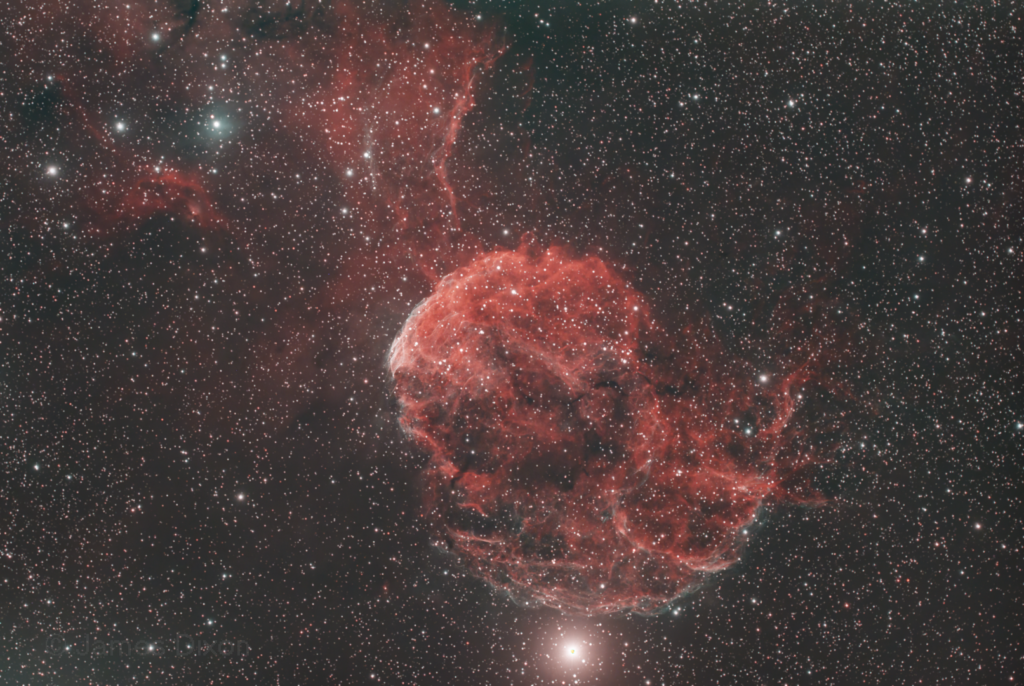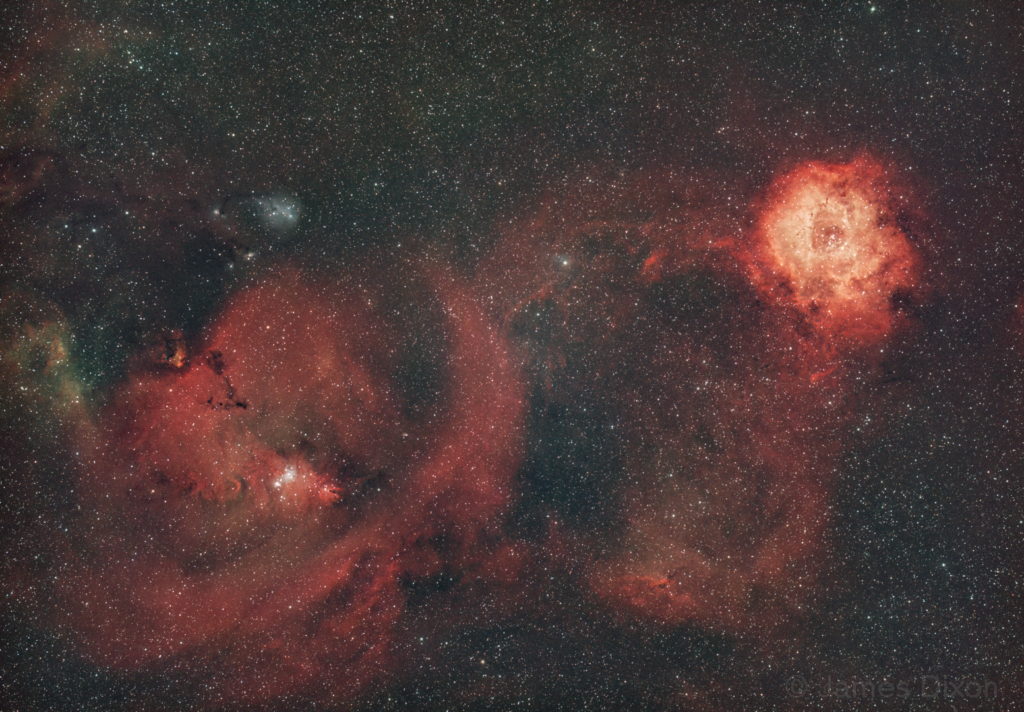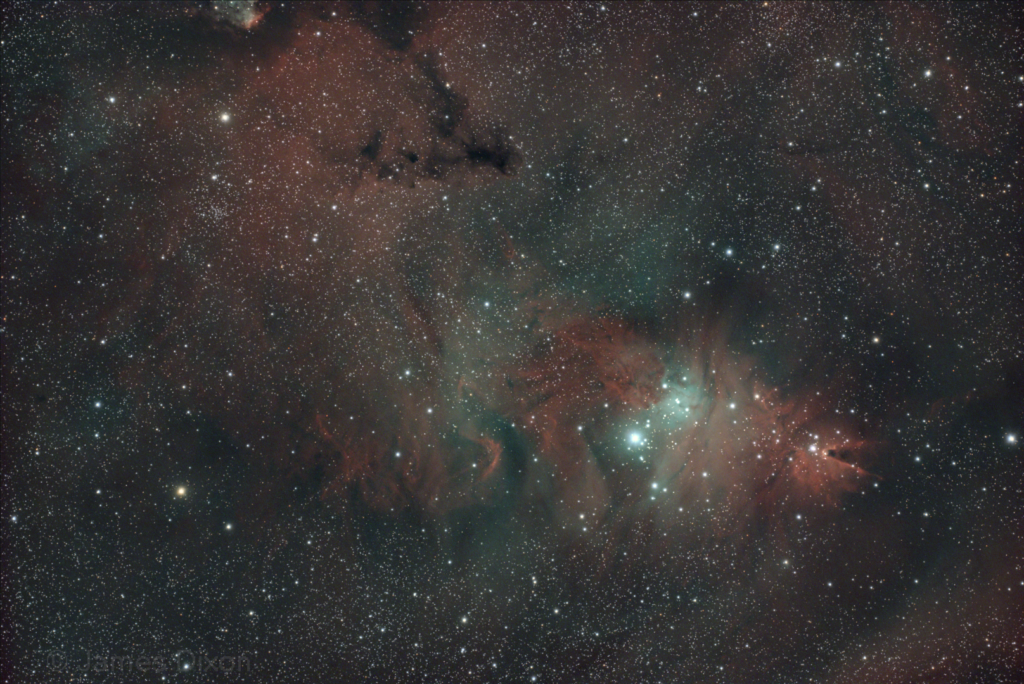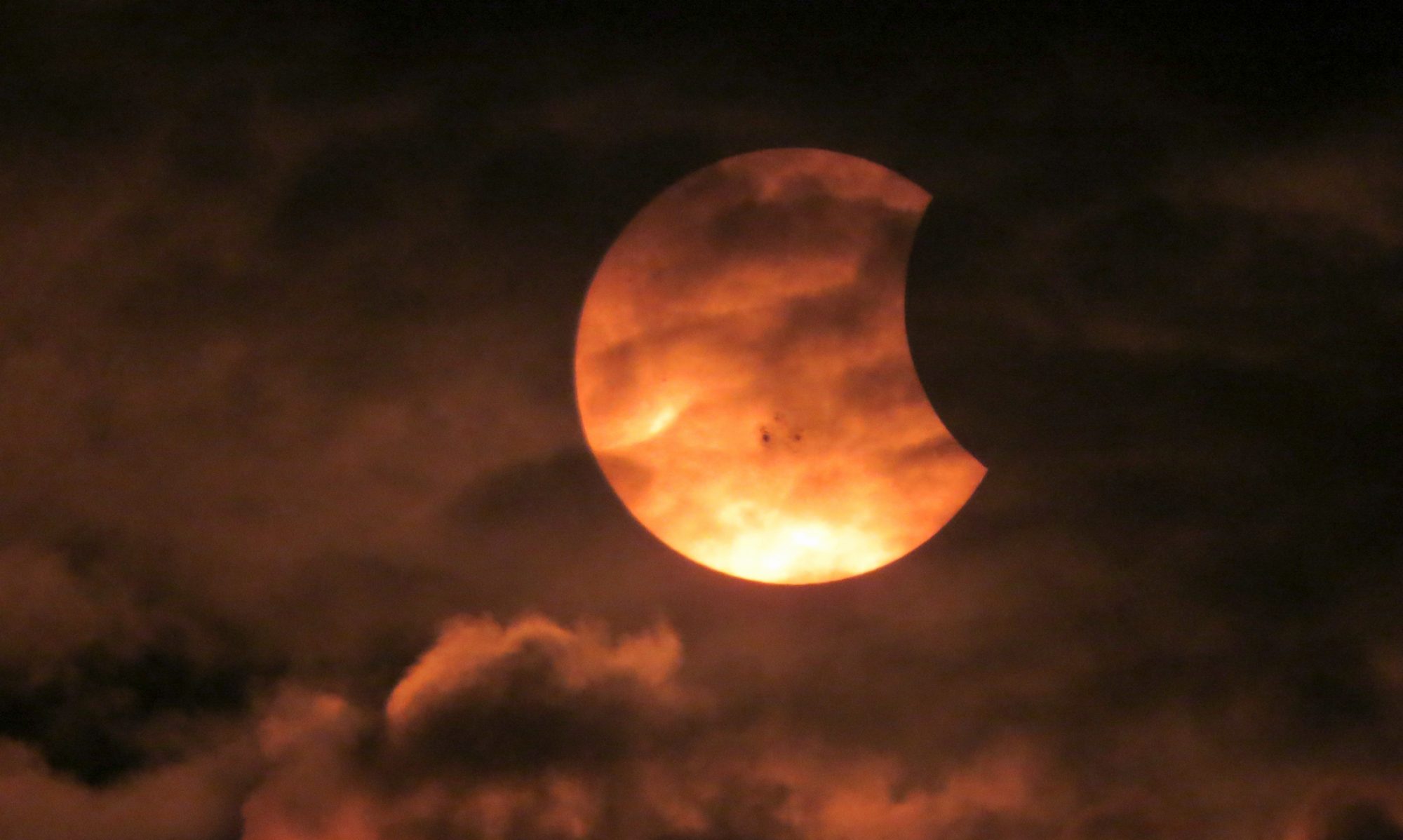Here is a nearly three hour video of Orion traversing my view to the south, compressed into 53 seconds. Each frame represents 20 seconds of real time. Canon T8i with a Rokinon 14mm lens.
2/1/2025 The Jellyfish Nebula

Saturday evening at the River Ridge Observatory, I shot the Jellyfish Nebula with my C11 @ f/1.9 with a ZWO ASI2600MC Pro and L-Extreme F2 dual narrowband filter.
From Wikipedia: IC 443 (also known as the Jellyfish Nebula and Sharpless 248 (Sh2-248)) is a galactic supernova remnant (SNR) in the constellation Gemini. On the plane of the sky, it is located near the star Eta Geminorum. Its distance is roughly 5,000 light years from Earth.
1/24/2025 Dreyer’s, Rosette, Cone, Fox Fur, you name it.
Another Friday night at the River Ridge Observatory. This time above freezing, at least for a while. I had my C11 with Hyperstar and Samyang 135mm aimed at overlapping targets. The Samyang centered on the star 13 Monoceros so that it could get targets from the Rosette Nebula on one side and the Cone and Dreyer’s Nebulae on the other. Meanwhile, the C11 was zoomed in on the Christmas Tree cluster area which includes the previously mentioned Cone and Fox Fur Nebulae.
First, the image from the Samyang and an ASI2600MC Pro with an Antlia Triband RGB Ultra filter. The Antlia is a triple narrowband, or maybe dual narrowband plus blue if you prefer. On the right hand side is the Rosette Nebula. I shot this a few weeks ago with a smaller format camera. Dreyer’s Nebula is the small blue patch in the upper left while the Fox Fur and Cone Nebulae are in the lower left. The field of view with this camera is about 10×6.6 degrees. This was made from 47 3-minute subs.

This close up of the Christmas Tree star cluster area was shot with my C11 with Hyperstar and an L-Extreme F2 dual band filter. No plus blue with this one. In the lower right is the Cone Nebula pointed toward some stars that make up the Christmas Tree Cluster. In the middle is the Fox Fur Nebula and some dark lanes while above that is a dark nebula whose name I don’t know. This was made from 90 1-minute subs. I tried for many more than that but the winds picked up and ruined many of my frames.

I finished around midnight when 10-15 MPH gusts made things difficult.
